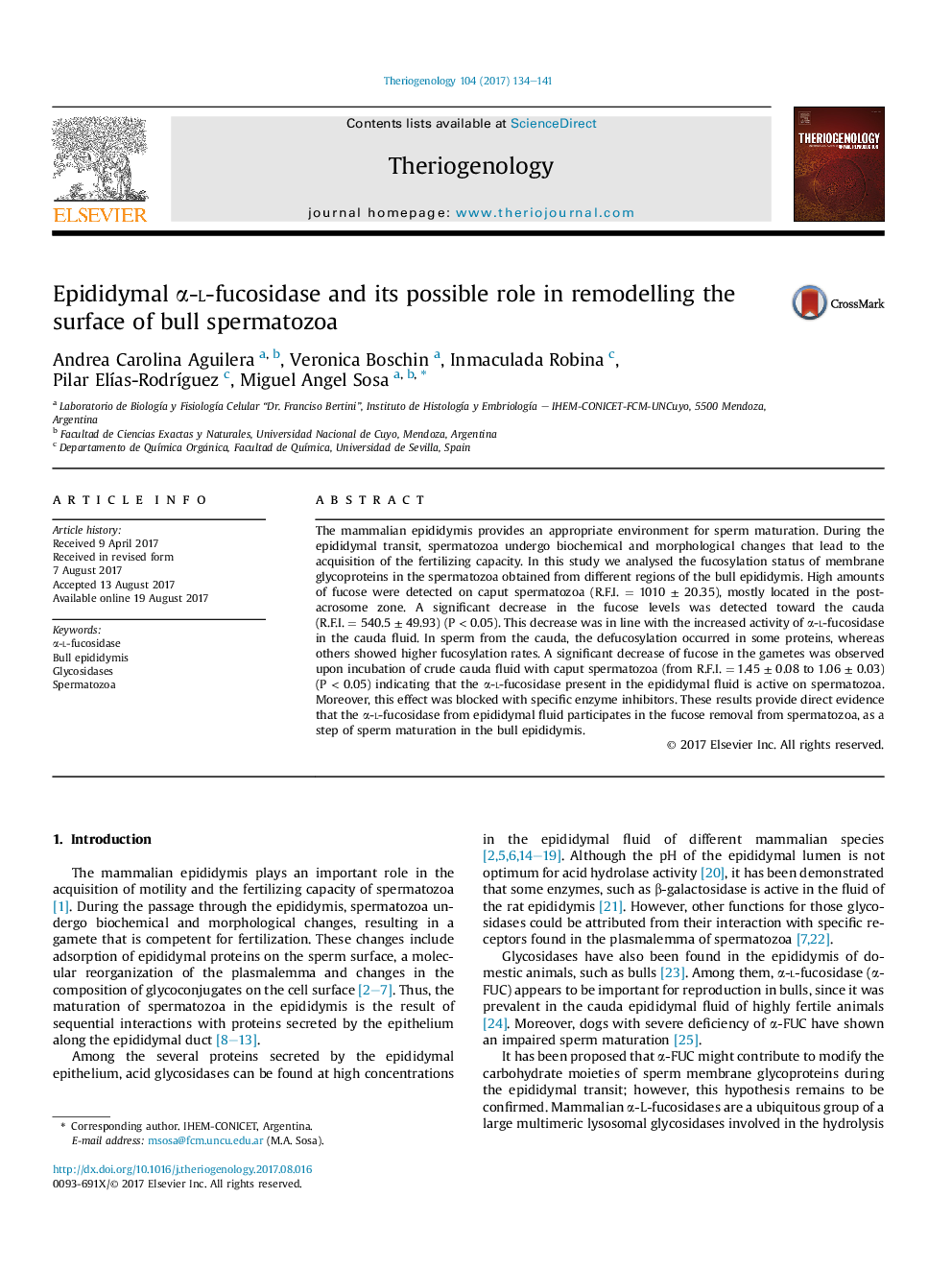| Article ID | Journal | Published Year | Pages | File Type |
|---|---|---|---|---|
| 5522997 | Theriogenology | 2017 | 8 Pages |
â¢Fucose content of sperm membrane decreases toward the cauda of bull epididymis.â¢An increased activity of α-l-fucosidase is found in the fluid of cauda epididymis.â¢Defucosylation of glycoproteins would be related to epididymal sperm maturation.
The mammalian epididymis provides an appropriate environment for sperm maturation. During the epididymal transit, spermatozoa undergo biochemical and morphological changes that lead to the acquisition of the fertilizing capacity. In this study we analysed the fucosylation status of membrane glycoproteins in the spermatozoa obtained from different regions of the bull epididymis. High amounts of fucose were detected on caput spermatozoa (R.F.I. = 1010 ± 20.35), mostly located in the post-acrosome zone. A significant decrease in the fucose levels was detected toward the cauda (R.F.I. = 540.5 ± 49.93) (P < 0.05). This decrease was in line with the increased activity of α-l-fucosidase in the cauda fluid. In sperm from the cauda, the defucosylation occurred in some proteins, whereas others showed higher fucosylation rates. A significant decrease of fucose in the gametes was observed upon incubation of crude cauda fluid with caput spermatozoa (from R.F.I. = 1.45 ± 0.08 to 1.06 ± 0.03) (P < 0.05) indicating that the α-l-fucosidase present in the epididymal fluid is active on spermatozoa. Moreover, this effect was blocked with specific enzyme inhibitors. These results provide direct evidence that the α-l-fucosidase from epididymal fluid participates in the fucose removal from spermatozoa, as a step of sperm maturation in the bull epididymis.
